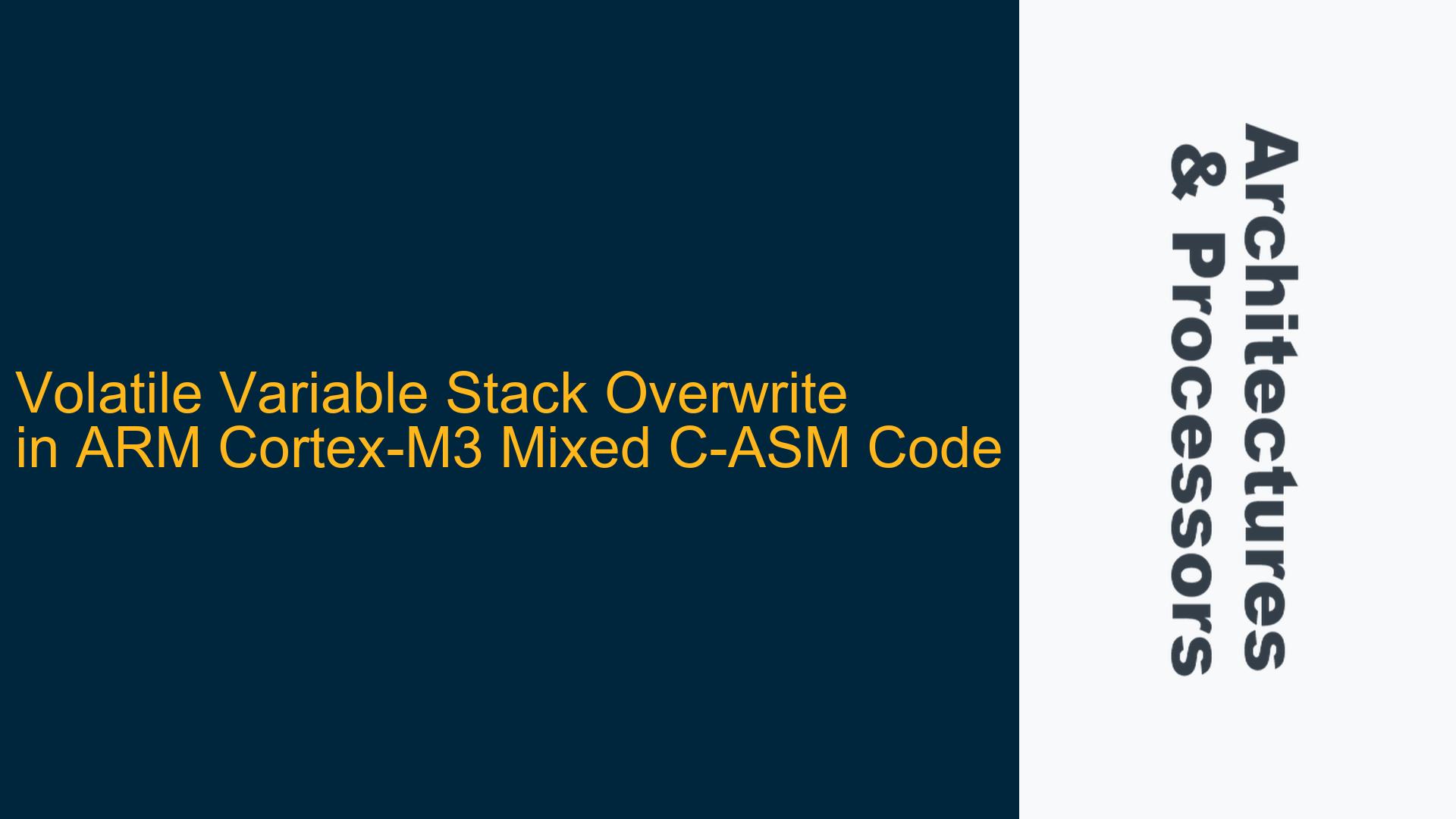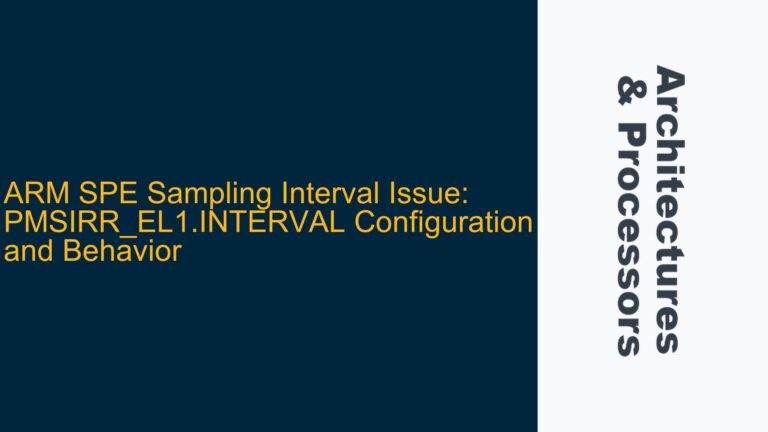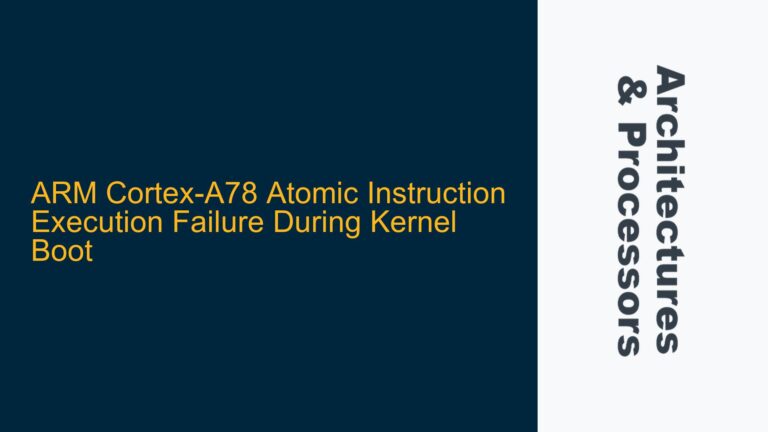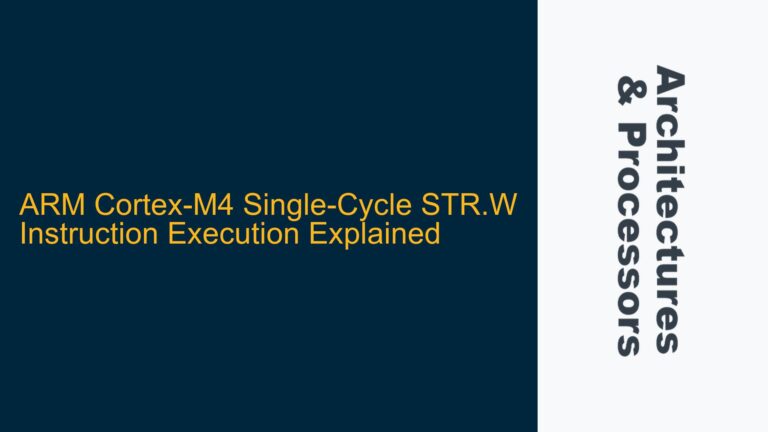Volatile Variable Stack Allocation and Overwrite During Mixed C-ASM Execution
When working with mixed C and assembly code on ARM Cortex-M3 processors, a common issue arises when volatile variables are allocated on the stack and subsequently overwritten during function calls. This problem is particularly pronounced when the assembly function modifies the stack by pushing additional registers, and the C compiler, unaware of these modifications, writes the return value to the original stack location, thereby corrupting the stack contents. This behavior is rooted in the ARM Application Binary Interface (ABI) and the handling of volatile variables, which are forced to reside on the stack rather than in registers. Understanding this interaction is crucial for debugging and ensuring correct stack management in mixed C-ASM environments.
The core of the issue lies in the compiler’s inability to track stack modifications made by assembly code. When a volatile variable is stored on the stack, the compiler assumes that its location remains unchanged throughout the function call. However, if the assembly function pushes additional data onto the stack, the original stack frame is altered, and the compiler’s assumption becomes invalid. This leads to the volatile variable being overwritten when the return value is stored, as the compiler uses the original stack offset without accounting for the additional data pushed by the assembly function.
Stack Frame Corruption Due to Unaccounted Assembly Stack Modifications
The primary cause of this issue is the mismatch between the compiler’s stack frame management and the actual stack state after assembly function execution. The ARM ABI specifies that the stack pointer must be restored to its original value after a function call, but it does not provide mechanisms for the compiler to track intermediate stack modifications made by assembly code. This becomes problematic when the assembly function pushes registers onto the stack, effectively shifting the stack frame downward. The compiler, unaware of these changes, continues to use the original stack offsets for storing return values, leading to stack corruption.
Another contributing factor is the use of volatile variables, which are always stored on the stack to ensure their visibility across different execution contexts. While this behavior is necessary for correct volatile semantics, it exacerbates the stack corruption issue when combined with unaccounted stack modifications in assembly code. The compiler’s inability to infer the stack state after assembly function execution further complicates the matter, as it cannot adjust the stack offsets dynamically based on the assembly code’s behavior.
Additionally, the ARM Cortex-M3’s calling convention, which uses registers for the first four function arguments and the stack for additional arguments, plays a role in this issue. When assembly functions push additional data onto the stack, they may inadvertently overwrite the stack space reserved for function arguments or local variables, leading to unpredictable behavior. This is particularly problematic when the assembly function does not adhere to the ABI’s stack management requirements, such as restoring the stack pointer to its original value before returning to the caller.
Implementing Stack Frame Consistency and Volatile Variable Management
To address this issue, developers must ensure that the stack frame remains consistent across C and assembly code boundaries. This involves adhering to the ARM ABI’s stack management requirements and explicitly accounting for any stack modifications made by assembly functions. One effective approach is to use a prologue and epilogue in the assembly function to save and restore the stack pointer, ensuring that the stack frame is preserved across function calls.
In the prologue, the assembly function should save the current stack pointer and any registers that will be modified, using instructions such as PUSH or STM. This ensures that the original stack frame is preserved and can be restored after the function completes its operations. In the epilogue, the assembly function should restore the saved registers and stack pointer, using instructions such as POP or LDM, to ensure that the stack frame is returned to its original state before returning to the caller.
For volatile variables, developers should avoid relying on the compiler’s default stack allocation behavior and instead explicitly manage their storage. This can be achieved by using pointers to volatile variables and passing them as function arguments, rather than relying on the stack for storage. By doing so, the volatile variables’ addresses remain consistent across function calls, and the risk of stack corruption is minimized.
Another important consideration is the use of memory barriers to ensure that volatile variables are accessed in the correct order. The ARM architecture provides several memory barrier instructions, such as DMB, DSB, and ISB, which can be used to enforce memory access ordering and prevent reordering of volatile variable accesses by the compiler or processor. These barriers should be used judiciously to ensure that volatile variables are accessed in the intended order, particularly in mixed C-ASM environments where the compiler’s optimizations may interfere with the intended behavior.
Finally, developers should carefully review the disassembly of their code to verify that the stack frame is being managed correctly and that volatile variables are being accessed as intended. This involves examining the generated machine code to ensure that the stack pointer is being saved and restored correctly, and that volatile variables are being accessed using the correct offsets. Tools such as disassemblers and debuggers can be invaluable for this purpose, as they allow developers to inspect the stack frame and verify that it is being managed correctly.
By following these guidelines, developers can ensure that their mixed C-ASM code operates correctly on ARM Cortex-M3 processors, avoiding stack corruption and ensuring that volatile variables are accessed as intended. This requires a thorough understanding of the ARM ABI, careful management of the stack frame, and judicious use of memory barriers to enforce correct memory access ordering. With these practices in place, developers can avoid the pitfalls of stack corruption and ensure that their code operates reliably in mixed C-ASM environments.






